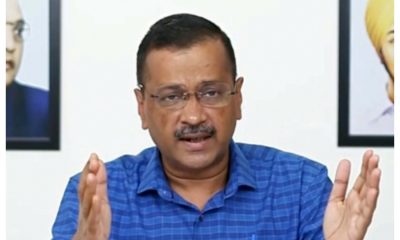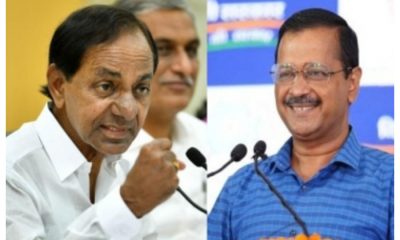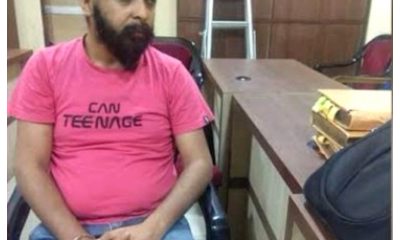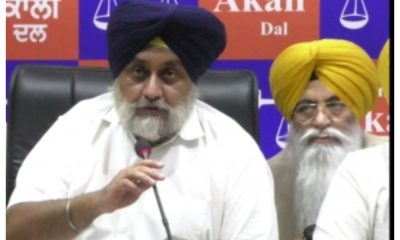National News
Sand mafia in Punjab worth Rs 20,000 crore: Kejriwal

Aam Aadmi Party (AAP) national convener and Delhi Chief Minister Arvind Kejriwal on Tuesday said the sand mafia in Punjab alone runs illegal business of over Rs 20,000 crore.
There are serious allegations of direct involvement of ruling Congress MLAs, their ministers and their close associates, including the Chief Minister himself.
Kejriwal was responding to the queries of the media persons on his arrival at Sri Guru Ramdas Ji International Airport here. He was on a day-long visit to Punjab for participation in party programmes.
He said when allegations of involvement of the Congress MLAs and ministers, including the Chief Minister, in sand mafia and many other illegal activities are being levelled, then who will protect the interests of the general public?
“Who will save the interest of Punjab? To whom will the common people go for justice? Can the welfare of Punjab and the people of Punjab be expected from such mafia and patrons of mafia state?”
Kejriwal said earlier the Badals and the BJP had looted the state by patronizing all sorts of mafia during their regime.
In 2017, people expressed their faith in the promises made by the Congress and the Captain (Amarinder Singh), but they too followed the footsteps of the Badals.
He said according to an estimate, illegal trade of Rs 20,000 crore per annum in sand and gravel mining alone was going on in Punjab. This money can be used for the welfare of the people, but it is going into the pockets of the leaders instead of the government coffers.
Kejriwal promised that with the formation of the AAP government in 2022, all sorts of mafia, including illegal sand mining, would be shut down.
The money that is going into the pockets of political leaders from the resources of the state due to mafia rule will go to the needy pockets of mothers, sisters and the elderly.
National News
Organisational rejig, bureaucratic reshuffle before SIR, poll process viewed as part of Trinamool’s 2026 gameplan

New Delhi, Oct 28: With Assembly elections expected in West Bengal by May-June next year, every move made by Chief Minister and Trinamool Congress Chairperson Mamata Banerjee will be under public scrutiny. Thus, the large-scale bureaucratic reshuffle carried out by her government hours before the Election Commission announced the Special Intensive Revision (SIR) of electoral rolls in the country, is suspected to be linked with the upcoming polls.
As is the ongoing organisational rejig seen as a move to strengthen a party facing incumbency, with alleged corruption, indiscipline, and infighting – sometimes leading to physical altercations – charges after about 14-and-a-half years in power.
The administrative order involves hundreds of officers being relocated or reassigned across several districts which the government described as routine, claiming that many of them had completed three years at their postings, requiring a move.
Technically, it is a norm at preventing any single officer from becoming a long-term local power broker. But in this case, the decision is being considered in certain sections as redeployment of key officials to place administrators with proven loyalty, competence, or responsiveness in critical districts before the SIR process begins.
Trinamool leaders have publicly criticised the Election Commission’s decision to conduct SIR in West Bengal, arguing the exercise risks wrongful deletion of legitimate voters and could be used to target specific communities for political advantage.
They framed the process as “politically-motivated” and warned of protests if valid electors were removed. They questioned the impartiality of the process and linked the timing of the exercise to heightened political stakes ahead of the 2026 Assembly polls.
However, the poll body clarified that as per law, electoral rolls have to be revised before every election or as per requirement, where SIR has been done eight times from 1951 till 2004, with the last taking place over two decades ago in 2002-2004.
Some changes, like frequent migration resulting in voters getting registered at more than one place, names of those deceased, including fraudulent entry of foreign nationals, among other, cannot be made in electoral rolls in the usual revision process. Such an exercise requires door-to-door visits at the booth level.
Reports – both administrative and media – have shown a demographic change in West Bengal, especially in districts bordering Bangladesh, due to decades of influx through porous borders and alleged political complicity.
Economic dominance and population growth among Muslims are allegedly altering local life, triggering tensions, as was reflected in this year’s violence in Murshidabad over the Waqf Amendment Bill.
Ruling party leaders publicly claim their absolute dominance in such areas, with poll results indicating the trend. There have been reports of certain immigrants holding voters’ identity card and participating in the poll process, without citizen status. Such voters can be identified through the process of SIR; though oversight or deliberate interference on ground level cannot be totally ruled out.
Meanwhile, in recent months, the Trinamool has undertaken widespread organisational changes at the district level to balance veteran leaders and emerging younger leaders.
The reshuffle aims to reduce factionalism, impose stricter controls, and future-proof the party machinery for securing a fourth term in power.
There also appears an attempt at a strategic recalibration from the “old vs. new” debate to a mix of prominent longstanding figures with younger faces in organisational committees and lists of future poll candidates.
The efforts involved restructuring, sometimes even abolishing, district presidents in favour of small, handpicked core committees. In Birbhum, Kolkata North, for example, district-level leadership has been moved from a single strongman to collective committees.
The party’s organisational moves may be viewed as a strategy to recentre control, reduce factionalism, and improve candidate quality – changes expected to influence party decision at considering tickets for the 2026 Assembly polls.
Crime
Fake ‘acid attack’: Delhi Police gives clean chit to 3 ‘accused’; woman, kin under scanner for staging incident

New Delhi, Oct 28: Delhi Police has given a virtual clean chit to a painter and two others accused by a woman of throwing acid on her in North Delhi’s Ashok Vihar last week, Special Commissioner of Police Ravindra Singh Yadav said on Tuesday.
Yadav expressed satisfaction over preventing injustice being meted out to the three “innocents” as the alleged attack has turned out to be an incident staged by the complainant woman and her family to settle scores with the “suspects”.
Yadav told IANS that technical analysis, CCTV footage and physical evidence proved that the three accused were not at the spot where the alleged “acid attack” took place on October 26 near Laxmi Bai College.
“It has turned out to be a case of old enmity related to a plot owned by the father of the woman who levelled false allegations of ‘acid attack’ on the accused,” he said.
The Special Commissioner of Police said the investigation is still underway but prima facie the conspiracy was hatched by the 20-year-old woman, her father, brother and uncle to try and implicate the three men in a false case of “acid attack”.
The two families have a history of litigation and criminal complaints against each other.
Investigators also revealed that the “acid attack” victim’s father Akil Khan, 45, now under custody, was accused of sexual harassment by the painter Jitender’s wife a few days before the October 26 staged episode of ‘acid attack’.
Yadav said the police are seeking legal opinion on the next step as the matter involves two separate issues.
“One, is the ‘acid attack’ and, the other, is the allegation of rape against the father of the ‘acid attack’ victim,” he said.
Yadav said, “For the time being, it is a matter of satisfaction for the police to have foiled the conspiracy by the woman’s family to implicate three innocent people.”
He said the police will now consider acting against the woman’s family for filing a false case.
Yadav said an investigation is still on to verify the woman’s statement that she and her family members had carried toilet cleaner from home to stage the ‘acid attack’ and subsequently report at a hospital with ‘acid attack burns’ on her hands.
The Special Commissioner of Police said they will soon share details of the alleged roles played by the family members of the woman in staging the ‘acid attack’ and attempting to implicate painter Jitender and his two aides, Ishan and Arman.
Yadav said in matters related to crimes against women the police promptly register a case on receiving a complaint and this is what happened in this matter. A case under Sections 124(1) and 3(5) of the Bharatiya Nyaya Sanhita was registered as FIR No. 605/2025 on the woman’s complaint which named the three ‘suspects’.
However, investigations revealed that the allegation against the three “acid attackers” were false and they were physically not present on the spot where the incident was staged, the police said.
Business
India’s services-led growth becoming more balanced, inclusive: NITI Aayog report
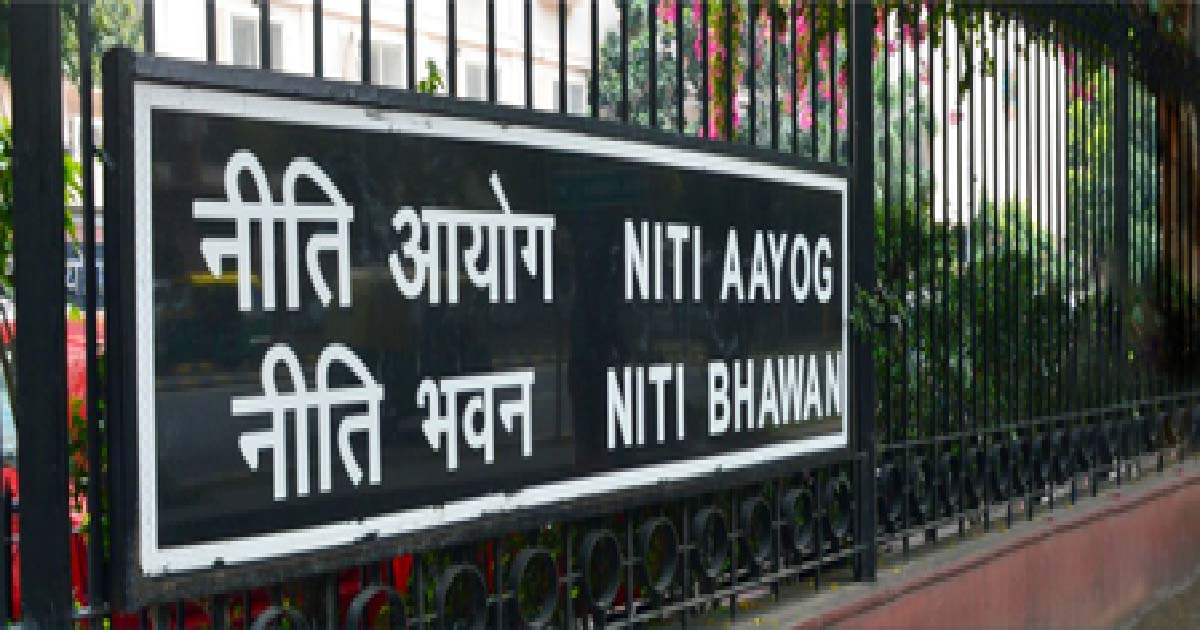
New Delhi, Oct 28: The services-led growth in India’s economy is becoming more regionally balanced as states with lower initial shares in services are catching up with more advanced ones, according to a NITI Aayog report released on Tuesday.
“There is clear evidence that structurally lagging States are beginning to catch up with advanced ones. This emerging pattern of convergence suggests that India’s services-led transformation is gradually becoming more broad-based and spatially inclusive,” the report states.
The services sector has become the cornerstone of India’s economic growth, contributing nearly 55 per cent of national GVA (Gross Value Added) in 2024-25.
To guide policy, the report introduces a quadrant-based framework that classifies 15 major service sub-sectors into four categories-Engines of Growth, Emerging Stars, Mature Giants, and Struggling Segments-to support differentiated strategies across States.
The report recommends prioritising digital infrastructure, logistics, innovation, finance, and skilling to accelerate diversification and competitiveness at the sectoral level.
It also recommends that at the state level there is a need for developing tailored service strategies based on local strengths, improving institutional capacity, integrating services with industrial ecosystems, and scaling up urban and regional service clusters.
Together, these findings offer a forward-looking policy road map for positioning the services sector as a key growth engine across India, reinforcing its central role in the Viksit Bharat @2047 vision.
A companion report titled India’s Services Sector: Insights from Employment Trends and State-Level Dynamics, focusses on employment within the services sector, drawing on data from the NSS (2011-12) and PLFS (2017-18 to 2023-24).
It offers a long-run and multi-dimensional view of India’s services workforce across sub-sectors, gender, regions, education, and occupations. The report goes beyond aggregate trends to reveal the sector’s dual character: modern, high-productivity segments that are globally competitive yet limited in employment intensity, and traditional segments that absorb large numbers of workers but remain predominantly informal and low-paying.
By linking historical and contemporary data, it situates these patterns within a broader framework of structural transformation, offering an integrated understanding of the opportunities and divides that shape India’s services-led employment transition.
Findings show that while services remain the mainstay of India’s employment growth and post-pandemic recovery, challenges persist. Employment generation is uneven across sub-sectors, informality remains widespread, and job quality continues to lag behind output growth. Gender gaps, rural-urban divides, and regional disparities underline the need for an employment strategy that integrates formalisation, inclusion, and productivity enhancement at its core.
To bridge these gaps, the report outlines a four-part policy road map focussing on formalisation and social protection for gig, self-employed, and MSME workers; targeted skilling and digital access to expand opportunities for women and rural youth; investment in emerging and green economy skills; and balanced regional development through service hubs in Tier-2 and Tier-3 cities.
By positioning the services sector as a purposeful driver of productive, high-quality, and inclusive jobs, the report underscores its centrality to India’s employment transition and its pivotal role in realising the vision of ‘Viksit Bharat @2047’.
The reports emphasise the need to deepen digital infrastructure, expand skilled human capital, foster innovation ecosystems, and integrate services across value chains, positioning India as a trusted global leader in digital, professional, and knowledge-based services.
-

 Crime3 years ago
Crime3 years agoClass 10 student jumps to death in Jaipur
-

 Maharashtra1 year ago
Maharashtra1 year agoMumbai Local Train Update: Central Railway’s New Timetable Comes Into Effect; Check Full List Of Revised Timings & Stations
-

 Maharashtra1 year ago
Maharashtra1 year agoMumbai To Go Toll-Free Tonight! Maharashtra Govt Announces Complete Toll Waiver For Light Motor Vehicles At All 5 Entry Points Of City
-

 Maharashtra1 year ago
Maharashtra1 year agoFalse photo of Imtiaz Jaleel’s rally, exposing the fooling conspiracy
-

 National News1 year ago
National News1 year agoMinistry of Railways rolls out Special Drive 4.0 with focus on digitisation, cleanliness, inclusiveness and grievance redressal
-

 Maharashtra12 months ago
Maharashtra12 months agoMaharashtra Elections 2024: Mumbai Metro & BEST Services Extended Till Midnight On Voting Day
-

 National News1 year ago
National News1 year agoJ&K: 4 Jawans Killed, 28 Injured After Bus Carrying BSF Personnel For Poll Duty Falls Into Gorge In Budgam; Terrifying Visuals Surface
-

 Crime1 year ago
Crime1 year agoBaba Siddique Murder: Mumbai Police Unable To Get Lawrence Bishnoi Custody Due To Home Ministry Order, Says Report



